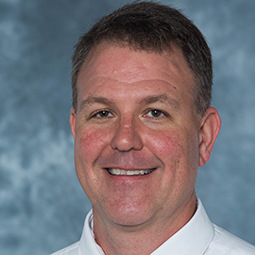Molinaroli College of Engineering and Computing
Faculty and Staff
Edward P. Gatzke
| Title: | Associate Professor and Undergraduate Program Director Chemical Engineering |
| Department: | Chemical Engineering Molinaroli College of Engineering and Computing |
| Email: | gatzke@sc.edu |
| Website: | Research Group |
| Phone: | 803-777-1159 |
| Fax: | 803-777-8265 |
| Office: |
Swearingen |
| Resources: | Software Teaching |

Education
- Ph.D., University of Delaware, 2000
- B.Ch.E, Georgia Institute of Technology, 1995
Research
Dr. Gatzke's research interests are in the area of process modeling, control, and optimization. Efficient operation of chemical processes requires a fundamental understanding of dynamic and nonlinear characteristics. A variety of controller formulations can be developed to reduce product variability and improve productivity. Estimation and diagnostic methods can be used to develop process information that cannot easily be directly acquired by instrumentation. Recently, new moving horizon formulations involving unknown values taking discrete values have been proposed. These applications require online solution to constrained mixed-integer optimization problems. Ongoing research efforts include parallel programming efforts for mixed-integer optimization, including parallel nonconvex nonseparable mixed-integer outer approximation and parallel nonconvex branch-and-reduce methods. Application areas of interest include particulate processing, bio-processes, and large-scale systems.
Publications
- H. Wang and E. P. Gatzke. "Asynchronous switching and sparse discretization with time scaling for control vector parameterization optimal control." in Engineering Optimization, 2024, P 1263-1290.
- Rawle D. Sookwah, Robert Petrulis, Sona Gholizadeh, and Edward Gatzke . "Exploring Expectations, Effort, and Persistence through Social Cognitive Theory: A Case Study of Persistence in a First-generation Engineering Student." in Journal of Global Research in Education and Social Science, 2025, P 221-235.
- H. Wang and E. P. Gatzke. "Modeling and Time-Optimal Control of an Experimental Hybrid Dynamic System." in OCAM, 2025.
- E. P. Gatzke. Introduction to Modeling and Numerical Methods for Biomedical and Chemical Engineering. Springer, 2021.
- A. T. Stamps and E. P. Gatzke. "Design of Hybrid Electrochemical Devices." in Microfabricated Power Generation Devices: Design and Technology. Wiley, 2009.